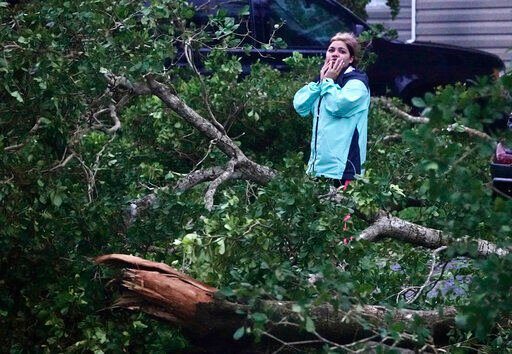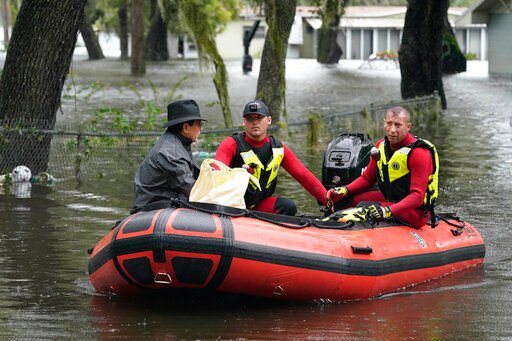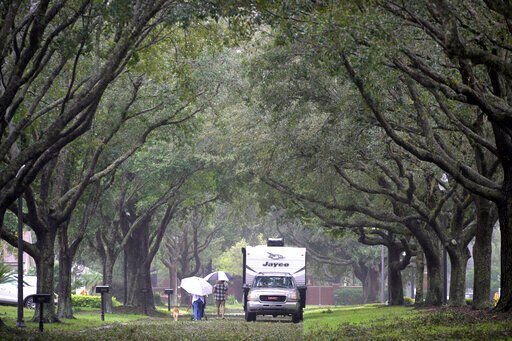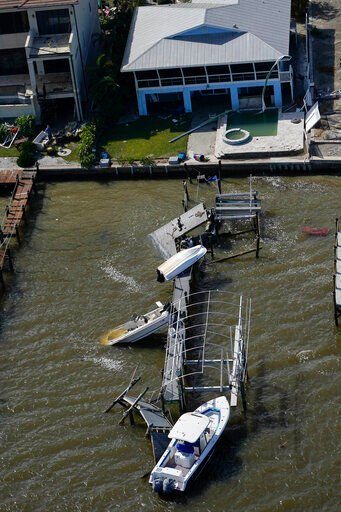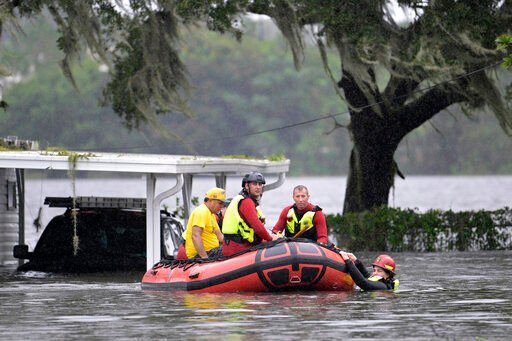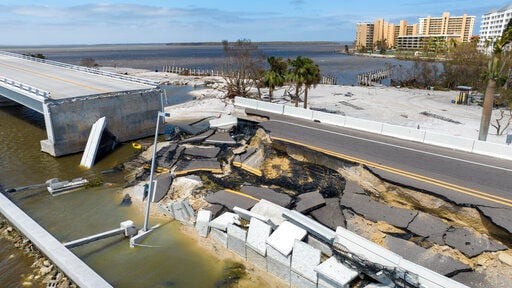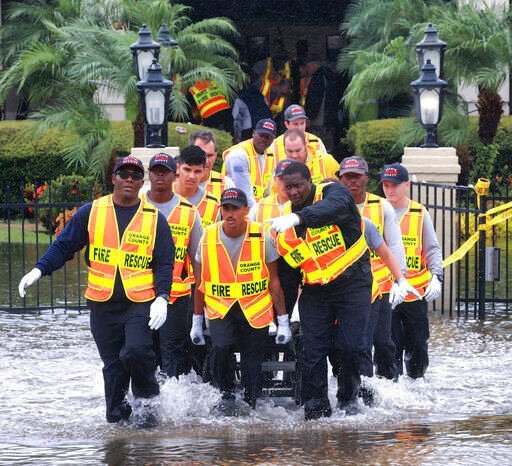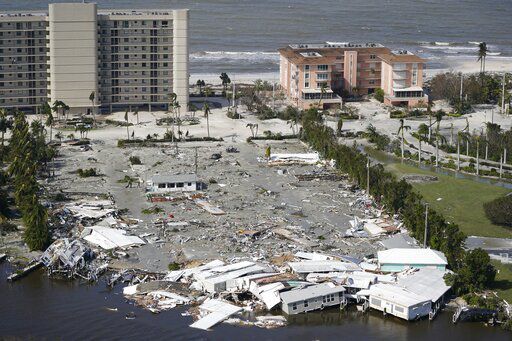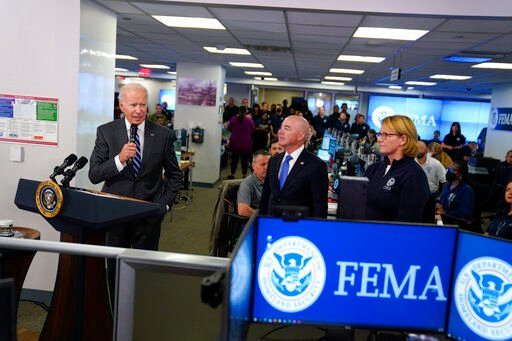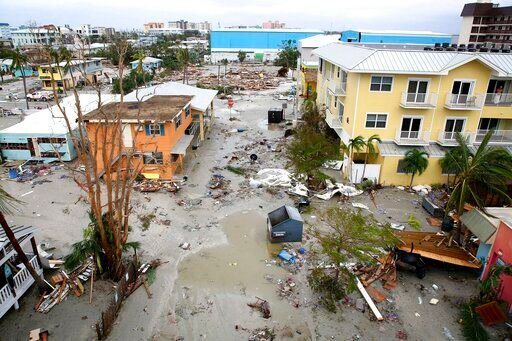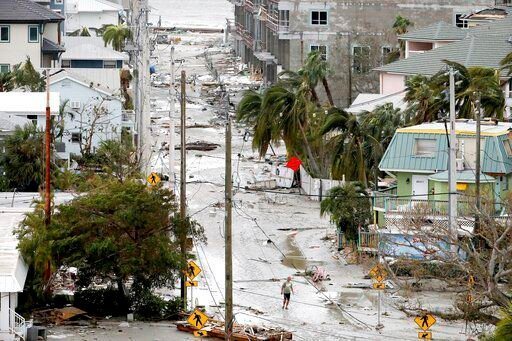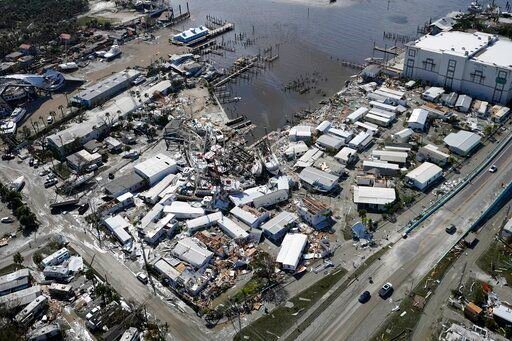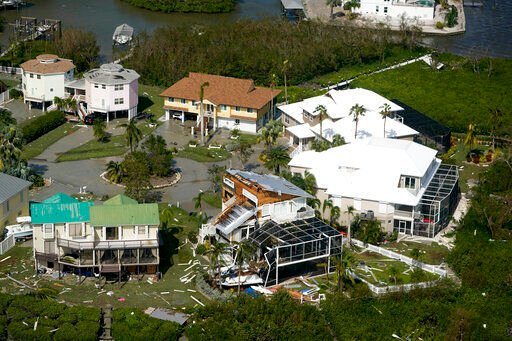PUNTA GORDA, Fla. — Rescue crews piloted boats and waded through flooded streets Thursday to save thousands of Floridians trapped after Hurricane Ian destroyed homes and businesses and left millions in the dark.
Hours after weakening to a tropical storm while crossing the Florida peninsula, Ian regained hurricane strength Thursday evening after emerging over the Atlantic Ocean. The National Hurricane Center predicted it would make landfall in South Carolina as a Category 1 hurricane Friday.
The devastation inflicted on Florida began to come into focus a day after Ian struck as one of the strongest hurricanes ever to hit the U.S. The storm flooded homes on both the state’s coasts, cut off the only bridge to a barrier island, destroyed a historic waterfront pier and knocked out electricity to 2.67 million Florida homes and businesses — nearly a quarter of utility customers.
At least one man was confirmed dead in Florida, while two other people were reported killed in Cuba after the hurricane struck the island Tuesday.
Aerial photos from the Fort Myers area, a few miles west of where Ian struck land, showed homes ripped from their slabs and deposited among shredded wreckage. Businesses near the beach were completely razed, leaving just twisted debris. Broken docks floated at odd angles beside damaged boats, and fires smoldered on lots where houses once stood.
“We’ve never seen storm surge of this magnitude,” Florida Gov. Ron DeSantis told a news conference. “The amount of water that’s been rising, and will likely continue to rise today even as the storm is passing, is basically a 500-year flooding event.”
After leaving Florida as a tropical storm Thursday and entering the Atlantic Ocean north of Cape Canaveral, Ian spun up into a hurricane again with winds of 75 mph. The hurricane center predicted it would continue to strengthen before hitting South Carolina on today, but still remain a Category 1 storm.
A hurricane warning was issued for the South Carolina coast and extended to Cape Fear on the southeastern coast of North Carolina. With tropical-storm force winds reaching 415 miles from its center, Ian was forecast to shove storm surge of 5 feet into coastal areas in Georgia and the Carolinas. Rainfall of up to 8 inches threatened flooding from South Carolina to Virginia.
The U.S. Coast Guard began rescue efforts hours before daybreak on barrier islands near where Ian struck, DeSantis said. More than 800 members of federal urban search-and-rescue teams were also in the area.
In the Orlando area, Orange County firefighters used boats to reach people in a flooded neighborhood. At an area nursing home, patients were carried on stretchers across floodwaters to a waiting bus.
Authorities confirmed at least one Florida death — a 72-year-old man in Deltona who fell into a canal while using a hose to drain his pool in the heavy rain, the Volusia County Sheriff’s Office said. Two other storm deaths were reported in Cuba.
Emergency crews sawed through toppled trees to reach stranded people. Many in the hardest-hit areas were unable to call for help because of electrical and cellular outages.
Ian struck Florida as a monstrous Category 4 storm, with 150 mph winds that tied it for the fifth-strongest hurricane ever to hit the U.S.


